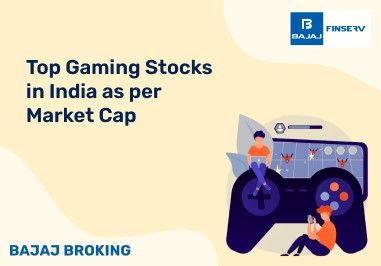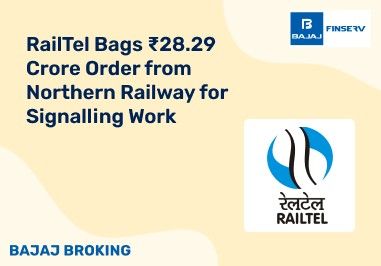BAJAJ BROKING
PDP Shipping & Projects IPO is Open!
Open a Free Demat Account
Trade Now, Pay Later with up to 4x
Track Market Movers Instantly
What Is a Trading Floor?
In the world of stock trading, where virtual transactions occur instantly, the concept of a trading floor might seem old-fashioned. Yet, the term “trading floor” holds both fascination and significance. It extends beyond being a mere physical space; it’s a dynamic arena where financial assets like stocks, bonds, and derivatives are exchanged, leaving an impact on economies and people’s livelihoods. This holds particularly true for a country like India, boasting a thriving economy and an animated stock market – making a grasp of trading floor intricacies all the more essential.
If you’ve ever been curious about the lively interactions occurring on a trading floor and their influence on the Indian stock market, you’re exactly where you need to be. Through this blog post, we’ll navigate you through a comprehensive understanding – from the basic meaning of floor trading to how it actually operates. Our journey will encompass the traditional open outcry method as well as its transformation into contemporary practices.
What is a Trading Floor?
At its essence, a trading floor is similar to a busy marketplace of the stock market. It serves as a dynamic and often lively space where traders of diverse expertise gather to engage in the buying and selling of an array of financial instruments, spanning stocks, bonds, commodities, and derivatives.
Trading floors in India have evolved significantly. They’re no longer limited to physical spaces; many transactions now occur electronically. So, what is floor trading in the stock market? It usually refers to the physical locations where trading once happened. But, in the current context, it means the digital platforms that facilitate trading today. Regardless of the mode, the trading floor remains a crucial part of India’s financial ecosystem.
This trading floor, whether within the walls of a physical space or in a digital space of virtual connectivity, is where real-time decision-making based on market trends and economic factors takes place.
Trading Floors and the Open Outcry Method
In the past, trading floors were often synonymous with the “open outcry” method. This method involved traders physically present on the floor, using hand signals and verbal communication to convey their buying and selling intentions. Imagine a scene from a movie, where traders shout and signal their orders amidst a sea of activity. While this method is now less common due to technological advancements, it played a significant role in shaping the trading floor’s historical image.
How Does Trading Floor Work?
At its core, it serves as a meeting point where buyers and sellers meet to conduct transactions. Whether through physical interactions or digital methods, the goal remains the same: to connect buyers with sellers and enable the trading of assets. The trading floor provides a real-time platform for determining prices, where the value of assets is established based on the current market’s demand and supply.
Structure of Trading Floor
A trading floor typically has different sections for various asset classes like stocks, commodities, and derivatives. Each section is designated for a specific type of asset, allowing traders to focus on their specialised areas. This segmentation helps streamline the trading process and enhances efficiency.
How is Trading Done on a Trading Floor?
Trading on a trading floor involves several stages, ensuring smooth and transparent transactions:
1. Bidding and Offering:
Traders, like skilled dancers, express their intentions through gestures and signals. This visual language communicates desires to buy or sell, forming the cornerstone of trading interactions.
2. Creation of Informal Contract:
The trading floor becomes a stage for the creation of informal contracts. When buyers and sellers mutually agree on terms, an unspoken contract is formed, an agreement upheld by the honour of traders.
3. Recording the Deal:
The details of the trade are recorded, including the asset, quantity, price, and parties involved. This record-keeping is crucial for transparency and accountability.
4. Confirmation:
Traders confirm their intent to finalise the transaction. Once both parties acknowledge the deal, it’s binding, and the assets change hands accordingly.
Types of Traders on a trading floor
On a trading floor, you’ll find various types of traders, each with their own strategies and goals:
1. Floor Broker:
The bridge between traders and clients, floor brokers execute orders on behalf of clients, aiming for optimal execution prices. They navigate the ebbs and flows of the trading floor, translating intentions into actions.
2. Scalper:
Scalpers aim to profit from small price changes by making frequent trades throughout the day. They capitalise on short-term fluctuations.
3. Position Trader:
Position traders take a longer-term approach. They hold onto assets for an extended period, sometimes even weeks or months, aiming to benefit from significant market movements.
4. Spreader:
Spreaders aim to profit from the price difference between related assets. They simultaneously buy and sell related contracts to take advantage of price differentials.
5. Hedger:
Hedgers use the trading floor to manage risk. They enter into trades to offset potential losses from their existing positions in other markets.
6. Specialists:
Specialists are experts in specific assets. They facilitate trading by maintaining an orderly market, providing liquidity, and matching buyers with sellers.
Conclusion
In essence, a trading floor is more than just a physical space or a virtual interface where financial instruments change hands. It’s a dynamic ecosystem where traders, both human and digital, converge to make transactions that shape the financial world. The evolution from open outcry to electronic trading mirrors the broader technological transformation of our society.
As we reflect on the concept of a trading floor, we’re reminded of its historical significance and its enduring relevance. While the traditional images of traders gesticulating on a crowded floor might be fading, the spirit of trading – the quest for profit, the management of risk, and the intricate dance of supply and demand – remains as vibrant as ever. Whether through physical gestures or lines of code, the trading floor continues to be a place where fortunes are made, lost, and remade, defining the pulse of the financial markets.
So, the next time you hear about the trading floor, you’ll have a deeper understanding of the bustling realm where stocks, bonds, and dreams are traded in the pursuit of financial success.
Share this article:
Read More Blogs
Our Secure Trading Platforms
Level up your stock market experience: Download the Bajaj Broking App for effortless investing and trading













